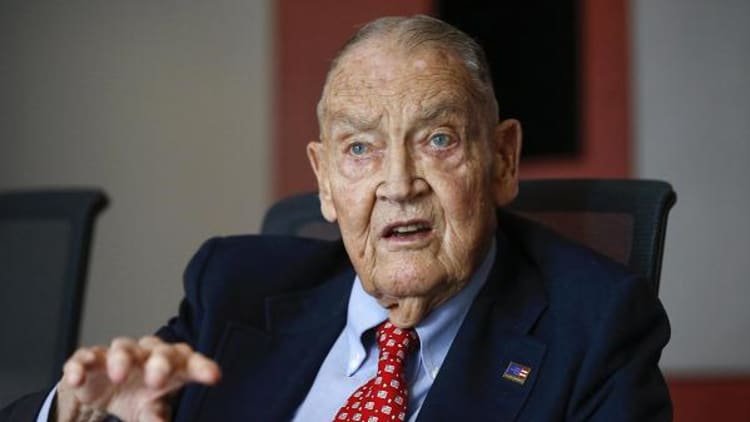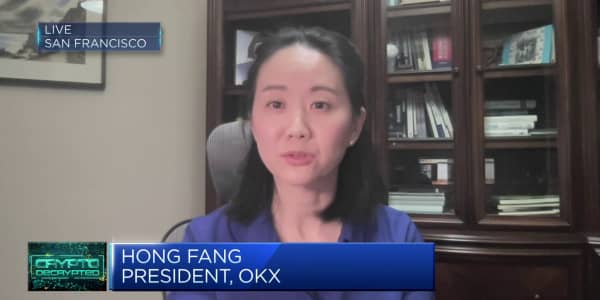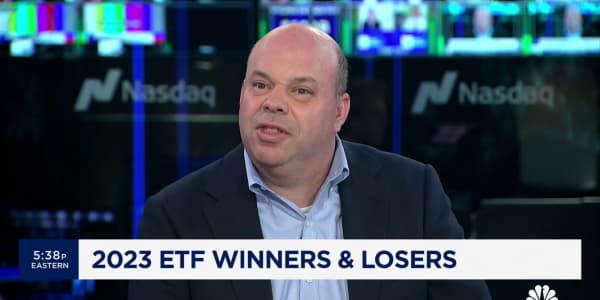The lineup of Vanguard actively managed factor ETFs is off to a very slow start in the asset-gathering race, at least relative to other Vanguard products.
Two months since inception, four of the six active factor funds have seen zero net asset inflows. Zero. They are the Vanguard U.S. Liquidity Factor ETF (VFLQ), the Vanguard U.S. Minimum Volatility ETF (VFMV), the Vanguard U.S. Quality Factor ETF (VFQY) and the Vanguard U.S. Value Factor ETF (VFVA).
One of the funds — the Vanguard U.S. Momentum Factor ETF (VFMO) — has attracted less than $2 million in net assets, probably benefiting from the fact that momentum is doing well this year. Only one ETF — the Vanguard U.S. Multifactor ETF (VFMF) — has seen a decent $11 million in net creations since mid-February.
According to Vanguard's head of quantitative equity product management Matt Jiannino, the main reason that uptake of these strategies has been slow is due to the fact that getting advisors onboard with a new fund — and a new active manager — takes time. The Vanguard brand name is strong, but the company has to spend time and effort on advisor education.
More from ETF.com:
Is bitcoin cutting into gold demand?
Going beyond the 60/40 portfolio
Top-performing ETFs of the year
Just as important is establishing a live performance track record, particularly in the active space, Jiannino says. Due diligence desks require sometimes as much as three years of track record for actively managed ETFs before they consider adopting them.
One multifactor ETF is standing out
The relative success of the multifactor strategy, VFMF, in attracting assets compared with the other five could be linked to implementation.
Advisors are more comfortable with a multifactor fund because it combines all the factors for them in one wrapper. It doesn't require timing the market and figuring out when to buy or sell a factor exposure, something even experts often can't do. VFMV is the easiest to implement.
"There's little evidence so far that any investor has figured out how to time the market with factors," Elisabeth Kashner of FactSet said. "It's not surprising that the only fund with real pickup is the multifactor fund."
Beyond track record and implementation, another hurdle may be one of perception associated with the brand, Kashner adds: "While the active factor ETFs carry out Vanguard's mission of delivering high-quality, low-cost products, they're not really 'Boglehead' products—they introduce significant complexity to a portfolio. It's not at all clear that this complexity will be rewarded over time."
"The whole point of factor investing has been, up to now, to replicate in passive form the 'secret sauce' of many active managers, a la Buffett's alpha," she noted. "Advisors may well be confused by what seems like backtracking."

Interestingly, Vanguard's purist approach to indexing — selecting and weighting stocks based on market capitalization—is precisely what drove its decision to take an active angle with its factor funds. The automatic rebalancing offered by a cap-weighted index is one of the reasons it is such a cost-effective approach, and from Vanguard's perspective, once an investors opts to target factors, they have already made an active decision.
What's more, maintaining that exposure in real time is something that requires a manager's hand on the steering wheel. Although the funds rely on a quantitative approach (and thus aren't thatactive), ultimately the manager has the discretion to make investment decisions.
Bull markets benefit index products
You can also pin the slow growth of these funds on the market environment. With U.S. stocks having rallied strongly for nearly a decade, appetite for active managers may still be low, although some say it's improving as volatility returns.
Tactical ETF strategist Stephen Blumenthal, head of CMG Capital Management Group, says the slow asset-gathering pace of these ETFs could reflect classic investor behavior in this type of market.
"What a statement that is about how investors feel about active management right now!" he said. "This is the type of investor behavior you see in late stages of a bull market, when everyone is piled into index investing."
In the end, it could very well be that Vanguard's foray into the actively managed ETF space will be a smashing asset-gathering success. But for now, we are reminded that even ETF giants such as Vanguard don't always have it easy when it comes to laying the groundwork required to build what could be tomorrow's blockbuster ETFs. Growing assets can take time.
Contact Cinthia Murphy at cmurphy@etf.com
To get the latest ETF news in your inbox, sign up for ETF.com’s ETF newsletter.




